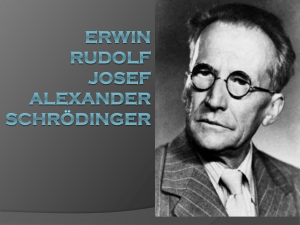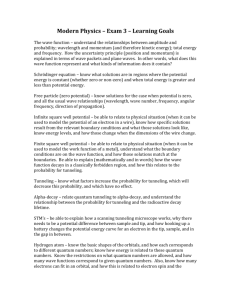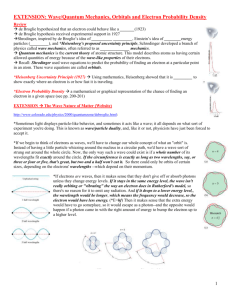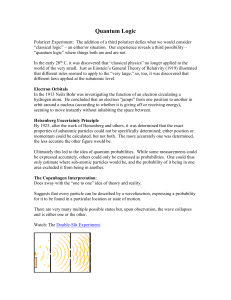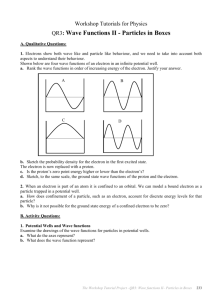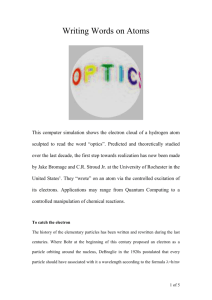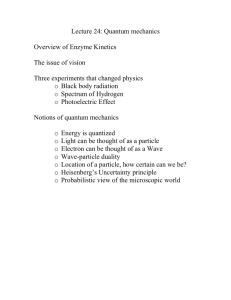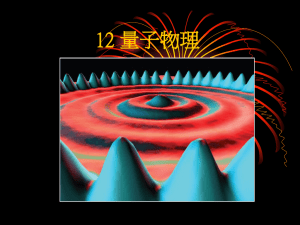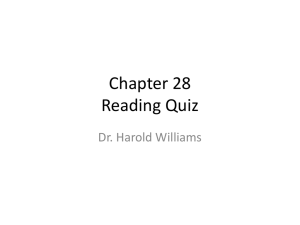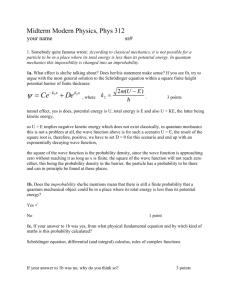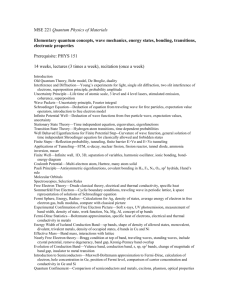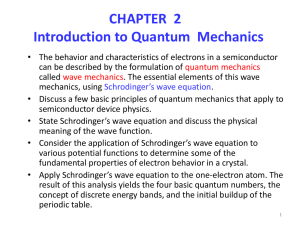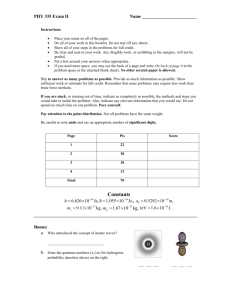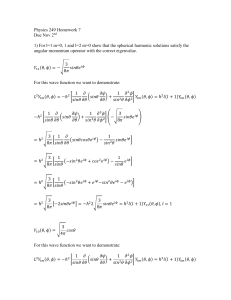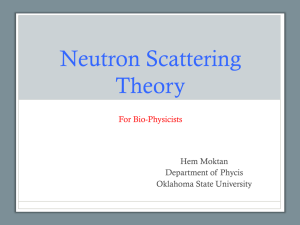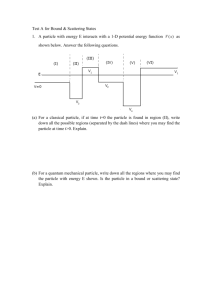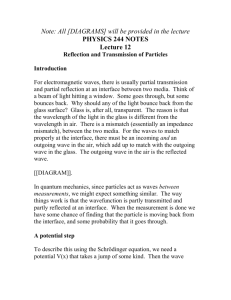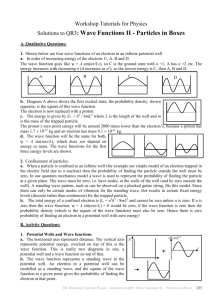History of QM, part 2
advertisement
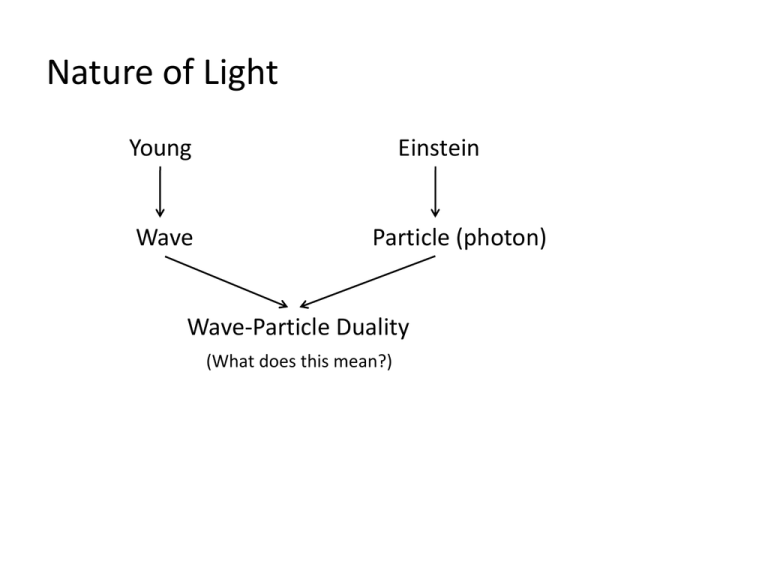
Nature of Light Young Wave Einstein Particle (photon) Wave-Particle Duality (What does this mean?) Rutherford’s Gold Foil Experiment Ernest Rutherford (1871 – 1937) One day Geiger came to and said, “Don’t you think that young Marsden, whom I am training in radioactive methods, ought to begin a small research?” Now I had thought that too, so I said, “Why not let him see if any alpha particles can be scattered through a large angle?” I may tell you in confidence that I did not believe that there would be, since we knew the alpha particle was a very fast massive particle, with a great deal of energy, and you could show that if the scattering was due to the accumulated effect of a number of small scatterings the chance of an alpha particle being scattered backward was very small. Then I remember two or three days later Geiger coming to me in great excitement and saying, “We have been able to get some of the alpha particles coming backwards…” It was quite the most incredible event that has ever happened to me in my life. It was almost as incredible as if you fired a 15-inch shell at a piece of tissue paper and it cam back and hit you. http://waowen.screaming.net/revision/nuclear/rsanim.htm Atomic Spectra Hydrogen Helium Mercury Neon The Hydrogen Spectrum Johann Jakob Balmer (1825 - 1898) Johannes Rydberg (1854 – 1919) WalterRitz (1878 – 1909) Ritz Combination Principle The sum of the frequencies of two spectral lines equals the frequency of a third. The Complete Hydrogen Spectrum Lyman Lines Balmer Lines Paschen Lines Energy Diagram for the Hydrogen Atom Bohr Model of the Hydrogen Atom Neils Bohr (1885 – 1962) Matter Waves Louis de Broglie (1892 – 1987) l = h/p Electron Diffraction Observed in 1927 Crystalline Nickel as an Electron Target L. H. Germer C. J. Davisson …studying electron scattering from a nickel target at Bell Laboratories. After heating the target to remove an oxide coating that had accumulated during an accidental break in the vacuum system, they found that the scattered-electron intensity as a function of the scattering angle showed maxima and minima. Their target had crystallized, and by accident they had observed electron diffraction. Physics by Paul A. Tipler Electron as “Orbiting” Wave Constructive Interference (Standing Wave) Destructive Interference http://www.youtube.com/watch?v=_S7-PDF6Vzc Quantized “Orbits” Due To Standing Wave Req. Now What? The wave function contains all possible information about a system, so instead of speaking of “the state described by the wave function Y,” we simply say “the state Y.” Quantum Chemistry by Ira N. Levine Erwin Schrodinger (1887 – 1961) What is the Wave Function? Quantum mechanics does not say that an electron is distributed over a large region of space as a wave is distributed. Rather, it is the probability patterns (wave functions) used to describe the electron’s motion that behave like waves and satisfy a wave equation. Quantum Chemistry by Ira N. Levine Max Born (1882 – 1970)

